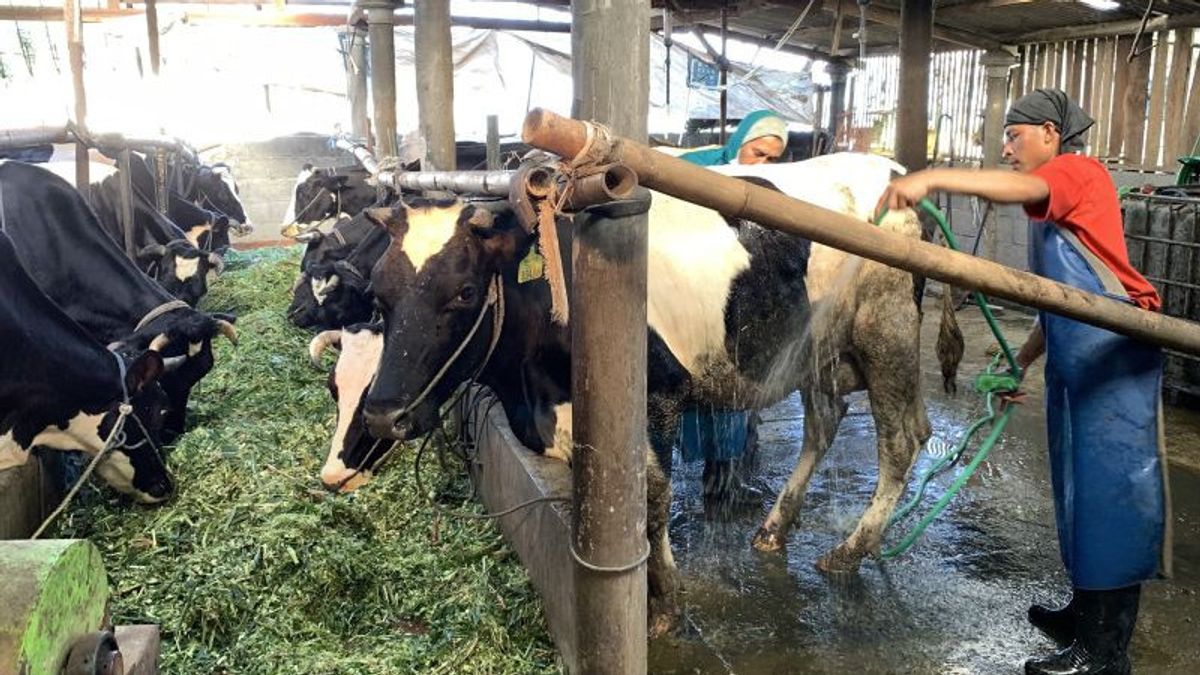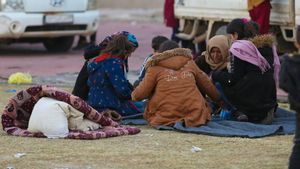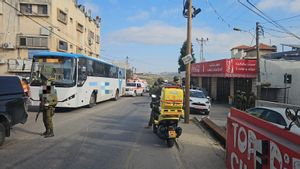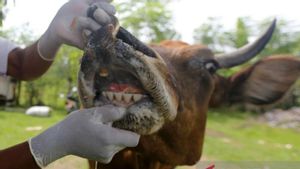DIY - The Department of Agriculture, Food and Fisheries (DPPP) of Sleman Regency deployed medical and veterinary paramedik officers at 14 animal health centers (Puskeswan) in Sleman.
Head of DPPP Sleman Suparmono said they were deployed to monitor the health of the Eid al-Adha 1444 Hijriah sacrificial animals.
"It is undeniable that the entry of sacrificial animals from outside the Sleman area to meet the needs can have an impact on the transmission and spread of infectious animal diseases," he said in Sleman, Yogyakarta Special Region (DIY), Monday, June 26, as reported by Antara.
Suparmono said the officer had been deployed since June 5, 2023 to monitor and supervise sacrificial animals both in the arriving markets and in the cages of groups that provide sacrificial animals with a point of 352 monitoring.
"As our reference, there will be 352 monitoring of the sudden market point and group rebuttal in 2022 in Sleman," he said.
He said, for guidelines and guidelines for slaughtering sacrificial animals, the Sleman Regent has issued Circular Number: 32 of 2023 for all regional stakeholders, mosque takmir, and the sacrificial committee under the basis of the SE Director General of Animal Husbandry and Animal Health of the Ministry of Agriculture number: 5412/SE/PK.430/F/OS/2023 and MUI Fatwa number: 34 of 2023 concerning the implementation of sacrificial and animal slaughter in preventing the spread of LSD disease and vigilance against Pes De Petits (PPR) disease.
"We have socialized the SE of the cutting guidelines to the public, especially to the takmir and the sacrificial committee in 17 kalinewon carried out by 14 Puskeswan officers in collaboration with the Sleman Regency Baznas," he said.
Suparmono said, according to the Regent's SE guidelines, there was an appeal for slaughtering sacrificial animals to be carried out at the Ruminansia Slaughterhouse (RPHR).
"However, considering the capacity and ability of the Sleman RPHR in Mancasan, Condongcatur, Depok, unable to serve, cuts are allowed to be carried out outside the RPHR, namely in mosques, schools or other agencies by obtaining recommendations from the Sleman Agriculture, Food and Fisheries Service," he said.
He said, to bring services closer to the issuance of cutting recommendations outside the RPHR, the community, takmir mosques and sacrificial committees can come directly to the Agricultural, Food and Fisheries Counseling Center (UPTD BP4) region I to VIII, because the authority has been delegated to them.
"If the sacrificial committee will get a recommendation service or will ensure whether the sacrificial animal is healthy or not, ask for supervision and inspection as well as for other consultations related to the sacrifice, they are welcome to contact local Puskeswan officers or to the local BP4 UPTD," he said.
To oversee the implementation of slaughtering sacrificial animals, the Sleman Agriculture Service deployed around 300 personnel consisting of ASN, non-ASN, and 246 animal health cadres, 40 FKH UGM students, and 30 support from PDHI coordinated by 14 health centers.
"They are tasked with conducting ante mortem examinations, or the day before the slaughter, live animal examinations are carried out to ensure animal health, Sarpras readiness, and waste management so as not to cause environmental pollution and disease spread," he said.
Then the officers will also monitor and examine the meat after the sacrificial animal is cut (post mortem) while educating and assisting the takmir and the sacrificial animal slaughter committee to continue to pay attention to animal welfare procedures and the final results of the slaughter to be safe, healthy, intact, and halal (ASUH).
The English, Chinese, Japanese, Arabic, and French versions are automatically generated by the AI. So there may still be inaccuracies in translating, please always see Indonesian as our main language. (system supported by DigitalSiber.id)













